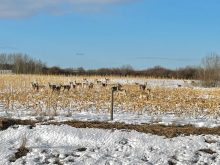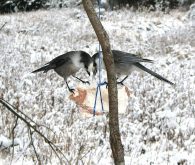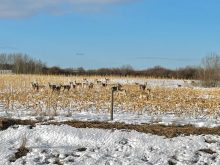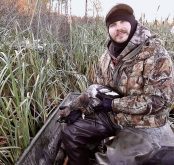Manitoba made notable progress on tracking chronic wasting disease over the last hunting season, the province says.
According to a press release in mid-February, the 2024-25 surveillance program expanded the hunting portion of the province’s management plan and took a bite out of testing times, which had previously seen issues with delays.
Why it matters: The fatal prion disease, which targets cervid species like deer, elk and moose, was confirmed in Manitoba in 2021 and has seen more serious spread in other Prairie provinces.
Read Also

The sneak peek of Manitoba Ag Days 2026
Canada’s largest indoor farm show, Manitoba Ag Days, returns to Brandon’s Keystone Centre Jan. 20-22, 2026. Here’s what to expect this year.
Manitoba’s 2024-25 program has reduced testing turnaround times from 77 days in 2022-23 to 37 days in 2023-24 and just 22 days this past hunting season.
The province’s mandatory surveillance zone — which, from south of Flin Flon, borders the western and southern edges of the province, plus game hunting areas (GHAs) around Riding Mountain National Park and most of the Assiniboine River — once again required all mule deer to have samples submitted. Mule deer are considered a higher risk for the disease.
In 2023, the province extended that requirement to all deer, including white-tails, and elk taken in the surveillance zone.
The province added a list areas in 2024 (GHA 5, 6, 6A, 7, 8, 10, 11, 15, 15A, 17B, 25B and 23) where hunters could purchase a second deer tag for anterless white-tails. Mule deer regulations allowed western Manitoba hunters to bag up to three mule deer tags, with the season spreading until early February.
Game tags issued in 2024 also included a biological sample section for hunters in the province’s CWD surveillance zone. That section was optional, the 2024 Manitoba Hunting Guide said, and didn’t replace the required paperwork hunters must fill out when dropping off samples at drop-off depots.
According to the province, the program processed about 3,100 samples in 2024-25. In 2022-23, when testing wait times soared to several months, the program had seen saw a surge of submitted samples up to 6,000.
CWD, which is fatal and has no cure, has been confirmed in 30 animals since 2021, including four in the 2024-25 season. Early detection through mandatory and voluntary hunter-sampled submissions plays a vital role in controlling the spread of the disease, the province says.
The provincial government is encouraging hunters to keep participating and sending in samples in 2025-26. Hunters seeking more information can contact the department via email at [email protected] or by phone at 1-204-638-4570.
Ian Bushie, minister of natural resources and Indigenous futures, did not respond to requests for comment as of press time.
















